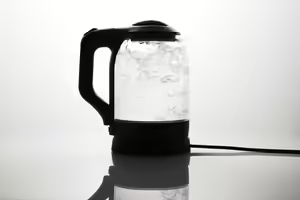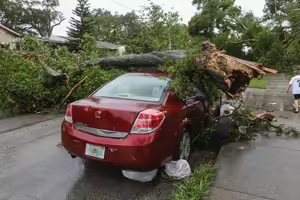Disaster Preparation
Disaster Preparation
Don't wait until it's too late. Prepare for disasters now!
Disaster events are increasing in frequency and intensity. FEMA recommends being self-sufficient for at least 72 hours. Check out these Essential Tip Sheets for Disaster Preparedness:

Boil-water advisories are public announcements by local water authorities advising the public to boil their tap water for drinking and other human consumption uses, to protect public health from waterborne infectious agents that could be, or are known to be, present in drinking water. Read the tip sheet below on what you need to do during a boil order.

Weather-related disasters create so much upheaval in people’s lives, any opportunity to bring things back to equilibrium or how they used to be, is vital to morale. What can you do to protect your valued landscape trees and shrubs when we find ourselves amidst severe weather? What does it take to make our landscapes more resilient?

During extended power outages, adequate nutrition is still important. It is important to know what to do with perishable foods when long-term outages happen. Flooding can also affect food safety. In fact, according to the Illinois Department of Natural Resources, 90% of all declared disasters in Illinois are floods. Look over these tip sheets to find out how to keep you and your loved ones safe and nourished.
Are You Ready?
We often don’t think about emergency preparedness until we’re in the midst of a disaster and by that time it’s probably too late to start gathering important belongings! House fires, floods, tornadoes, and power outages all pose a threat to us here in the Midwest. Research shows that disaster events are increasing in frequency and also intensity. Take time to get prepared for unexpected emergencies.
Tip sheet on Emergency Preparations
Make a Plan & Be Informed
- Know which types of disasters are most likely to affect your area.
- Consider the specific needs in your household.
- Devise an emergency plan that includes an emergency kit and a household emergency communication plan.
- Practice your plan with your family or household.
- Learn community warning systems, download the FEMA app, and familiarize yourself with local relief organizations such as the American Red Cross and Salvation Army.
Prepare an emergency kit or “go-bag”
FEMA recommends that all households create an emergency kit with supplies for everyone in your family (including pets) for at least 3 days. A basic emergency kit should include:
- Extra cell phone battery/charger
- Hand-crank weather radio
- Flashlight with extra batteries
- First aid kit
- Whistle
- Waterproof matches or lighter
- Local maps
- List of medications, and emergency contacts.
For more info and a printable checklist, visit ready.gov/kit
Tune in to our Emergency Kits and Communications Plans in-depth workshop on YouTube.
Build an emergency food and water supply.
A minimum of three days is recommended but two week is preferable. Food that doesn’t require refrigeration or cooking is ideal. You’ll also want enough water on reserve for everyone in your household, including your pets! Aim for 1-2 gallons of water/person/day.
Consider other sources of water in case your supply gets low. Have a couple of disinfecting/filtering methods on hand in case the water isn’t safe to drink after a disaster. Visit our website for more on Food Safety Before, During, and After Disasters.
Watch our in-depth workshop on YOUtube: Building Your Emergency Food & Water Supply.
Tap into emergency food relief organizations
Visit the Find Food Illinois Community Food Map to locate food resources in your zip code by visiting, go.illinois.edu/FindFood.
Get more information from our in-depth workshop on The Impact of Hunger and Health in Disasters.
Have you given much thought to the trees on your property?
Caring for trees in the years before a weather event occurs can help grow strong, resilient plants. Selecting the right tree species for the site, pruning for structural strength and balance, and watering trees in times of drought are ways to promote weather-sturdy trees. If your trees are damaged, contact a certified arborist to assess damage and remove large limbs.
Get more information from our in-depth workshop on Tree Management Before and After a Disaster.
Get your finances ready for emergencies.
6 out of 10 households in the United States experience at least one financial emergency in a year, and 1/3 of American families do not have any savings. Start small and contribute to an emergency fund when able. Also consider how you have your financial documents stored. Keep them all in one place with account numbers and passwords to make things easy to find following a disaster.
Get more information from our in-depth workshop on Financial Emergency Preparedness.